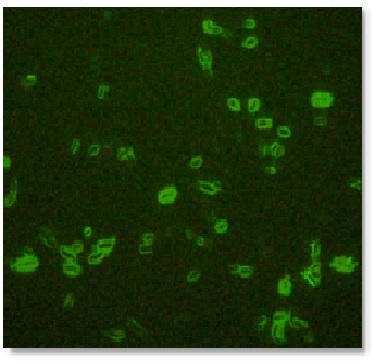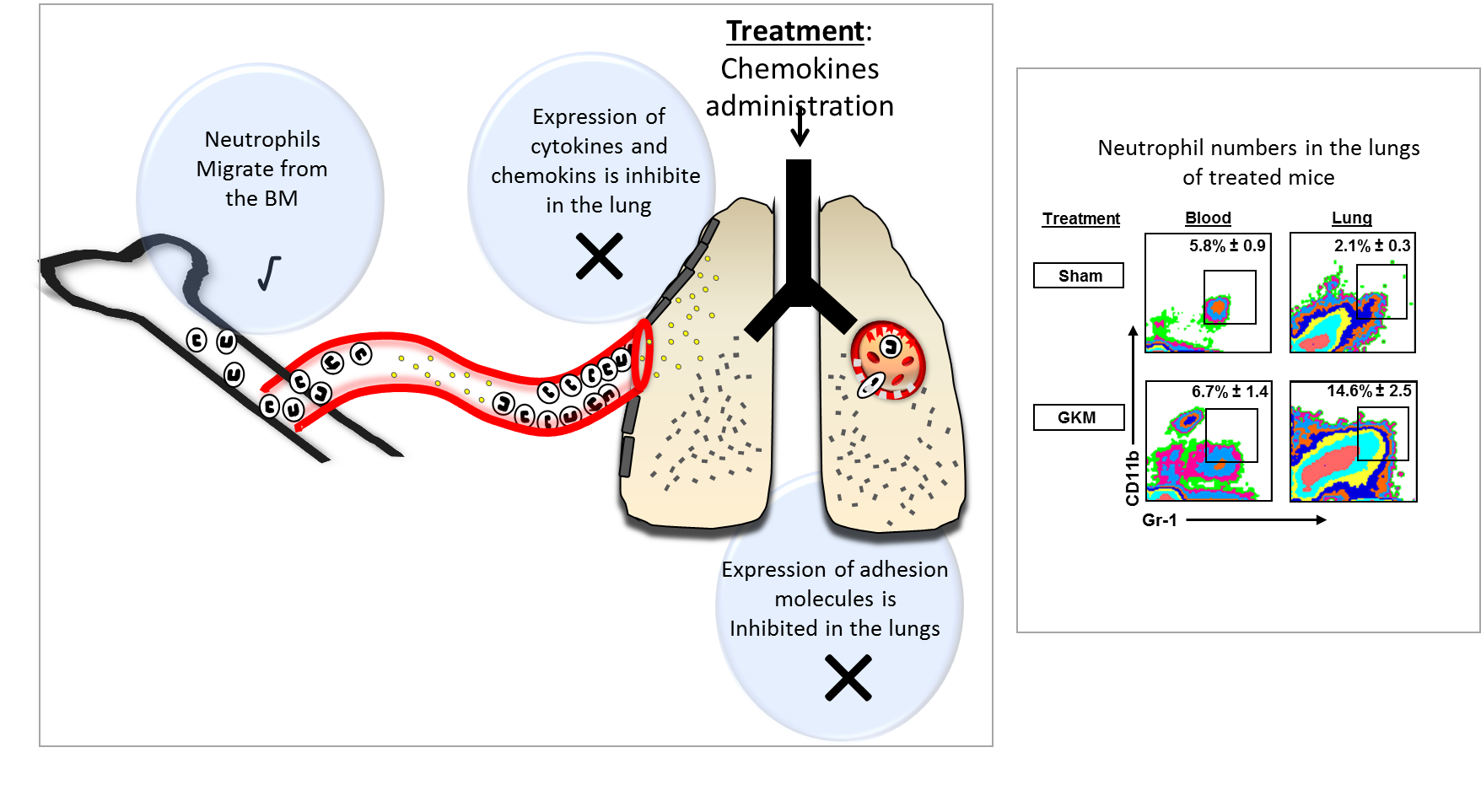The gram-negative pathogen Yersinia pestis is the causative agent of plague, a disease that has caused millions of deaths in three world pandemics. Plague still persists in Africa, Asia and the Americas and it is categorized as a re-emerging disease. The most prevalent form of the disease in nature is bubonic plague, which develops following transmission of the pathogen from rodent reservoirs to humans via infected fleas. Pneumonic plague is less abundant in nature and results from inhalation of Y. pestis-containing droplets or aerosols. Pneumonic plague is an infectious, rapidly progressing disease leading to high mortality rates in untreated patients. These characteristics led to the recognition of plague as a Tier 1 bioterror threat agent by the CDC.

Yersinia pestis IFA staining of the F1 capsule
The Yersinia research team
The Yersinia research group is conducting basic and applied research to study the plague pathogen Yersinia pestis. Our research focuses on studying host-microbe interactions, mechanisms of pathogenesis and mechanisms of innate and adaptive immunity that could be used for development of improved therapies and vaccines against this pathogen. Additionally, our team supports the institutional research programs for the development of sensitive and accurate assays for plague diagnosis.
Current research projects:
- Novel therapeutic strategies for pre- and post-exposure plague counter-measures (Steroids, inhalational antibiotic treatment, neutrophil recruitment).
- Identification of key elements involved in the mechanisms of rapid anti-plague immunity (EV76-based induction of iron nutritional immunity).
- A systems biology approach to the development of diagnostics based on host-pathogen interactions in the course of pulmonary infection.
- Characterization of Y. pestis classic and novel virulence factors.
- Development of improved methods for plague diagnosis.
Beneficial corticosteroid adjunctive therapy against plague
Inflammatory response is an important feature of the host innate immunity evolved to protect the host against invading microorganisms. In this project we addressed the possibility of improving anti plague therapy efficacy by combining corticosteroid administration with delayed antibody therapy in the mouse model of bubonic plague. We were able to show that- corticosteroids induce an unexpected effective anti-bacterial response on addition to their anti-inflammatory properties, thereby improving treatment efficacy. To the best of our knowledge, this is the first study that demonstrates the contribution of corticosteroids to treatment against plague.

Early recruitment of neutrophils to the lungs has a therapeutic potential against pneumonic plague
Pneumonic plague involves an initial non-inflammatory phase in which the influx of neutrophils to the lungs is suppressed, allowing bacterial propagation in this organ. In this research project we used the mouse model of pneumonic plague and found that the early expression of neutrophil chemoattractants and adhesion molecules in the lungs is delayed concomitant with a delayed recruitment of neutrophils to the lung. Administration of recombinant KC and MIP-2 into the infected lung of G-CSF-treated mice, restored the early neutrophil influx into the lungs, leading to a significant reduction in the bacterial burden and also proved efficacious in reducing mortality. The findings of this project highlight the complex virulence mechanisms employed by Y. pestis to diminish the early recruitment of neutrophils to the lungs thereby allowing bacterial propagation and disease progression.
